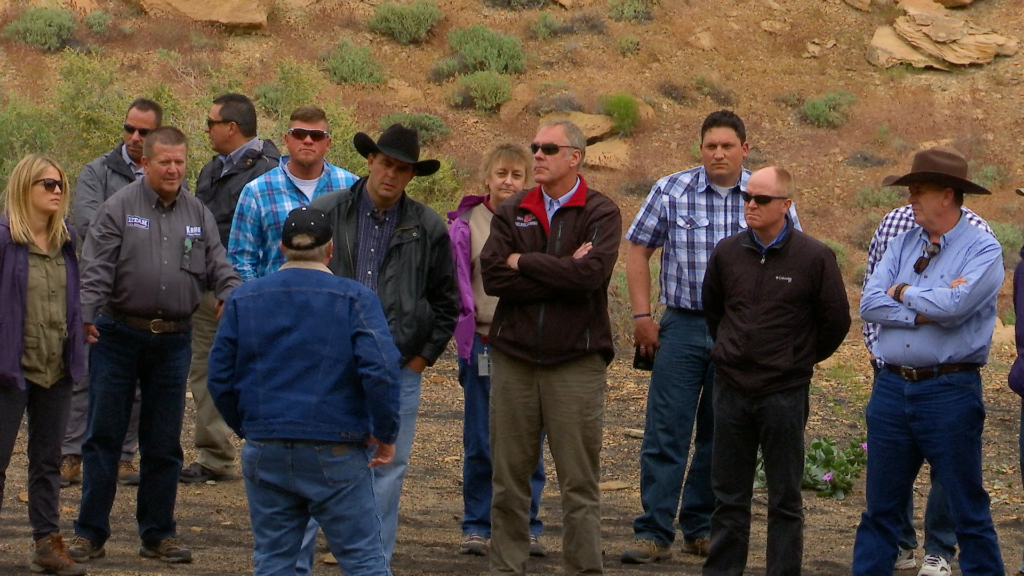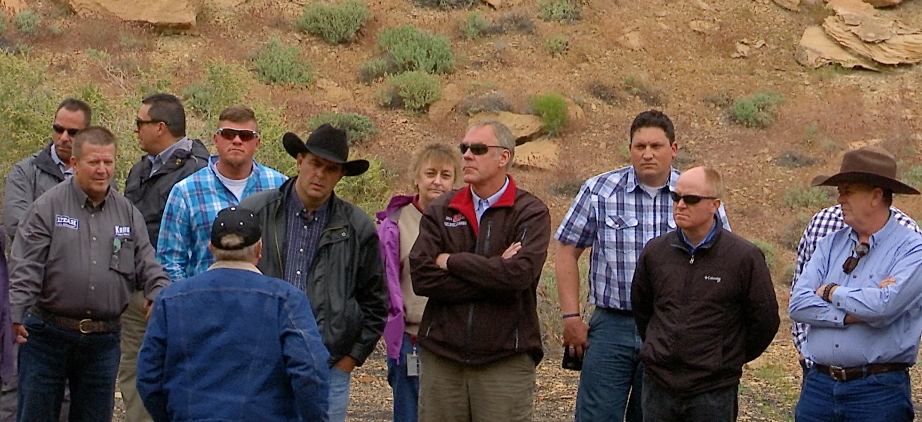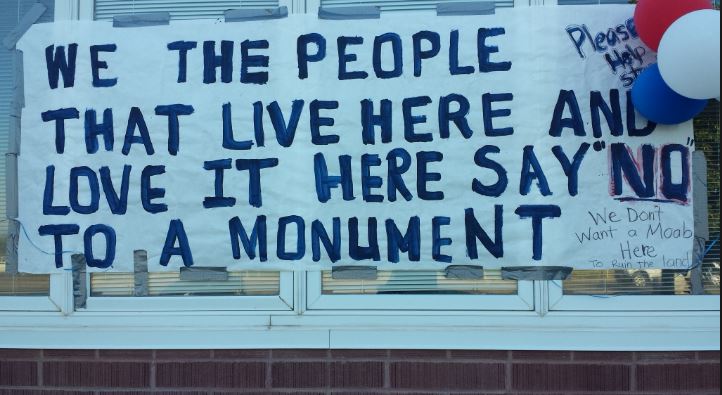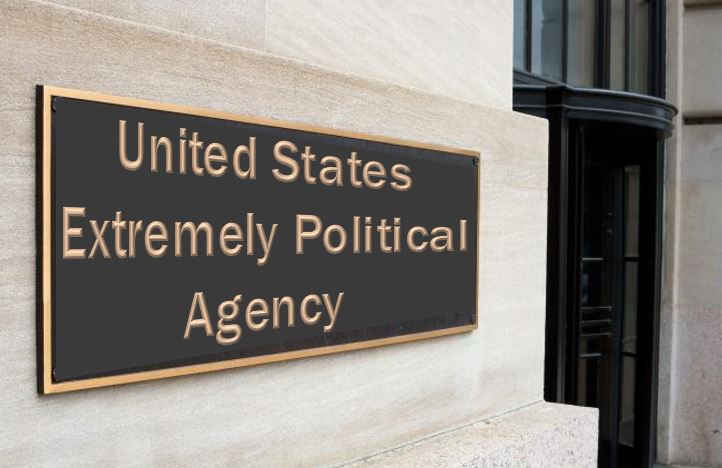“Monuments should never be put in a position to prevent rather than protect and the president is pro-energy across the board,” Zinke said. “We, as a country, we need an economy and what drives our economy in a lot of ways is energy. So energy has to be abundant, reliable and affordable and coal has taken huge hits and the president and I believe inappropriately so.”
Tracie Sullivan
On the ground with Zinke: Grand Staircase trip brings ‘optimism’
GRAND STAIRCASE-ESCALANTE NATIONAL MONUMENT – As part of a historical three-day tour to Utah, Interior Secretary Ryan Zinke wrapped up his trip this week visiting the Grand Staircase-Escalante National Monument Wednesday.

President Donald Trump recently ordered Zinke to review 24 to 40 monuments – starting in Utah.
Created in 1996 under former President Bill Clinton, the Grand Staircase-Escalante monument takes in 3,000 square miles or 1.9 million acres and encompasses the largest land area of any monument outside of Alaska.
It contains three primary physiographic regions: the Grand Staircase, the Escalante Canyons and Kaiparowits Plateau – an area that the U.S. Geological Survey estimates contains 62 billion tons of coal.
Over the years, the monument has remained a sore spot among political leaders who were left out during the process of its creation and feel to this day their voices have been ignored.
Zinke’s visit Wednesday began in Kanab with an 8:30 a.m. breakfast at the water conservancy district building where he participated in a round table discussion with several state and local leaders, most all of them sporting cowboy hats and boots – icons of a vanishing culture many locals blame on the monument.
“Before the monument my same allotment was allowed 260 head of cattle. But think of this, think of selling 260 calves in the fall versus 64 calves in the fall,” local rancher and Garfield County Commissioner Leland Pollock said, about his own grazing rights on the monument. “Those other 200 allotments are suspended and they aren’t any good to me. So they show up on paper in the BLM office as allotments so it looks like we still have the same amount of allotments but they’re suspended and I can’t use them. That’s how the federal government is getting rid of the rancher on the monument.”
Following the morning briefing, the group headed to Big Water where they met up at the Bureau of Land Management office to start their all-day trek to the top of Smokey Mountain.

About halfway to the destination, Zinke’s entourage stopped to take a short hike to the once-proposed Smokey Hollow Mine on the Kaiparowits Plateau.
Utah Rep. Mike Noel, R-Kanab, took this chance to share with Zinke that as a former employee of the BLM he had overseen a “bulletproof” environmental impact assessment on a project that would have generated 9 billion tons of clean high-quality coal, hundreds of jobs and millions of dollars in revenue.
Instead, Noel said, Clinton and then-Vice President Al Gore stood on the southern rim of the Grand Canyon in Arizona and announced the designation of the monument – locking up the coal for at least the next two decades. All for political gain, he added.
But with the current U.S. president motivated to keep his campaign promises to renew the coal industry, political leaders are hopeful Trump will reduce the size of the monument which could allow access to the coal reserves.
“I’m very excited. I think there’s hope, hope for the people who want change on the monument and who want the boundaries reduced dramatically,” Pollock said. “If we can’t rescind this thing then we need to reduce it to the minimum amount possible. I’m excited. This is a good day.”
When asked by St. George News whether the mineral resources inside the monument are a factor in the ultimate decision to reduce the acreage, Zinke said the president is interested in developing “all energy sources.”
“Monuments should never be put in a position to prevent rather than protect and the president is pro-energy across the board,” Zinke said. “We, as a country, we need an economy and what drives our economy in a lot of ways is energy. So energy has to be abundant, reliable and affordable and coal has taken huge hits and the president and I believe inappropriately so.”
Zinke would not commit on how large of a role coal might play in deciding the monument’s fate.
“We’re not picking or choosing which energy,” Zinke said. “We are looking at America as it should be the energy leader and environmentally it is better to produce energy here under reasonable regulations than be held hostage by energy produced oversees with no regulations.”

Kane and Garfield County commissioners prepared a proposal for the monument to be reduced to 200,000 acres. It was given to the interior secretary on his visit.





public Comments for the EO ordered review are open. https://www.regulations.gov/searchResults?rpp=25&po=0&s=DOI-2017-0002&fp=true&ns=true